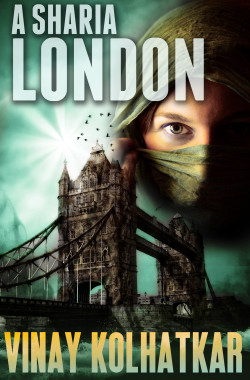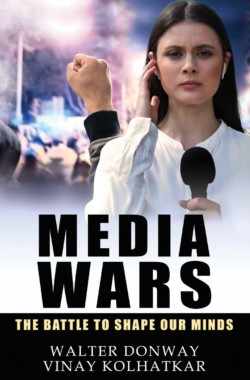The Science of Story: An Evening with Karel Segers
Karel (pronounced Cu-rell [Cu as in Cut) Segers wrote his first produced screenplay at age 17. Today he is a story consultant, writer and producer, with experience in film rights acquisition, development, and production. Karel is a qualified teacher whose lectures have inspired students in Australia, Europe, Asia, and the Middle East. His clients include award-winning filmmakers as well as three Oscar-nominees. Karel is the founder of The Story Department and www.Logline.it! and he ranks in the world’s Top 10 of most influential people for screenwriting on Twitter. He is a co-writer on Danger Close (a.k.a. Long Tan), a screenplay that attracted Kriv Stenders (Red Dog), Sam Worthington (Avatar) and Stuart Beattie (Pirates of the Caribbean).Savvy Street’s Vinay Kolhatkar (VK) caught up with him in December 2014.
VK: You grew up in Belgium. What was it like in those days?
KS: Belgium was a very protected, largely mono-cultural society, where the Catholic church was very powerful. I remember it to be literally and figuratively grey. Not surprisingly, people speak of boring Belgium. Today I realise that Belgium has produced some tremendous artistic works, and people. Possibly just because of (the yoke of) its strong Catholic heritage.
VK: What drove you to have a career in radio, and then in film and scriptwriting?
KS: I’ve always explored and followed opportunities, rather than push my life in a particular direction. At least that is how I saw my career, until I read about the Law of Attraction. Then I realised I had been mesmerised by radio as a teenager. It really feels like my dream of working in the media materialised without too much effort. From radio I went into TV, where I negotiated (for the purchase of) and programmed movies. In those days (early 2000’s), inspired by my friend and mentor Chris Craps, I started reading about screenwriting during my lunch breaks at the Digital Broadcasting Company (a hyper-cool London-based media startup led by former Sky BSkyB CFO Richard Brooke that I was involved with).
VK: Alfred Hitchcock once said, ”Drama is life with the dull bits cut out.” Do you agree with this definition of drama?
KS: It’s a simplistic statement, but Hitchcock probably meant that too many movies sacrifice drama to verisimilitude. I totally agree with that.
VK: You are a big fan of structure. Can you define structure?
KS: It is not easily defined. In my screenwriting courses, I cover many topics that involve structure, without ever trying to define it. My critics believe I’m a structuralist, at the cost of ‘character’. It proves they don’t understand how stories work, because you can’t build a character without understanding the structure to do this. In short, to appeal to an audience, events and actions must be organised in a way that makes sense logically, emotionally and dramatically. Structural principles are not invented by Hollywood, or its gurus. They are mostly rooted in psychology and mythology. When we sit down to watch a movie, the way we experience the story is largely determined by who we are and what stories we have experienced before. As a writer you can ignore this, or use it to connect with the audience. In the latter case, you will have to study structure. No surprise to me that in the recently leaked Sony emails, Scott Rudin didn’t praise Aaron Sorkin for his dialogue; but for his structure.
VK Do the elements of structure apply equally to films, plays, and novels?
KS: They do, but in different ways. The psychological process of watching a film is slightly different from reading a novel or watching a play. Ignore these differences, and you’ll end up with adaptations that don’t make any sense on the big screen.
VK: What are your two best film illustrations of great story structure?
KS: I think AVATAR is hugely underrated for its structure. In the tragedy category, I’m a fan of ONE FLEW OVER THE CUCKOO’S NEST.
VK: Which two movies would best elucidate a concept failure arising from a flawed story structure?
KS: It would be too easy to pick an Australian film in this category, as there are just too many in terms of better-known films. A film I often use in my classes is Baz Luhrman’s AUSTRALIA, which proves that a movie needs three acts, not four. In that film, the main goal of getting the cattle across the continent is completed in Act 3 (as it should); then a new Act starts with the Battle of Darwin, which makes the whole structure collapse like a bad pavlova.
VK: Have you seen any Australian movies that have impressed you lately?
KS: I really liked TRACKS, about the girl crossing the Australian desert with three camels and a dog. She makes for a very strong main character with a clear, obsessive goal. This makes for a wonderful protagonist. On the other hand, I was appalled when I heard the budget. Typically far too high to be a commercial success. I also really enjoyed SON OF A GUN, despite its flaws.
VK: Why are so Australian film stories meandering and meaningless when it regularly churns out world-class actors?
KS: This is a very difficult question, and I probably don’t have a good answer. But about the lack of successful concepts and character in Australian film, I have a theory that has to do with the absence of strong male role models in our society. Perhaps we are facing a chicken-and-egg situation, but I don’t see any inspiring males in present-day Australia, nor in our movies. The American poet Robert Bligh wrote about this phenomenon in America in the 1980’s. I think Australia suffers a particularly bad case of it today.
VK: Even some screenwriting gurus say we are in the golden age of television. Would you agree?
KS: Completely. McKee has been saying it for a long time, and he was dead right. Today, there are far more TV series I would love to see than movies. Last year I spent a lot more time watching TV than movies, which was a first since my childhood!
VK: What are your three favourite movies of all time?
KS: My taste changes. Among my favourites have been TOUCH OF EVIL (O.Welles 1958), BARTON FINK (Coen Brothers) and LA NOTTE DI SAN LORENZO (Taviani Brothers). I’m also a huge fan of the first 25 years of output at Pixar.
VK: Do you approach the teaching of screenwriting in a vitally different way to most other teachers? E.g. Linda Aronson and John Truby claim that structure, in particular, the three-act structure, is extremely limiting, and that organic growth of story frees the writer up.
KS: What Linda Aronson rightfully acknowledges, is the difference between the creative and analytical process. We need both. Of course, stories must grow organically. They sprout from our unconscious, or they are worthless. Then, we need to shape them into a workable structure. And the three act-structure is a tool that many have applied successfully. I don’t care what you call your structural device, as long as enough people agree on the terminology so we can have a meaningful conversation about it. Personally, I focus on areas others have left uncovered, such as POV, Mid-Point, and Active Characters. I came up with a very simple, yet extremely powerful way of looking at story. My students love it, because it helps to solve some pernicious story problems that occur inevitably in your early career.
VK: In “Do Film Critics Understand Film?” I argue not only that critics have failed the industry by failing to adopt structure, but even screenwriting teachers have celebrated awful films simply because critics raved about them. Would you agree?
KS: I agree. The worst case I know of, is the power David and Margaret had in Australia. I am absolutely convinced that their ignorance has contributed to the terrible state our industry is in. Arriving in Australia from London, and having read or watched the best critics and reviewers in the world, I couldn’t fathom that these two had such an impact on my new Australian peers.
VK: Is plot-driven or character-driven a false dichotomy that must be ignored or does it have some sense of validity?
KS: Until a filmmaker understands that character and structure are essentially the same, they can’t tell a story properly. Beyond that, there is only event cinema for audiences that want visual adrenaline thrills, or avant-garde art-house. I remember watching Derek Jarman’s BLUE, where character/structure didn’t matter in the slightest. Now, whether you like it or not, the event audience is growing by the day. Or rather, viewers interested in ‘story’ seem to be shifting more towards TV than cinema.
VK: Are there screenwriters whose work or work-ethic you admire greatly?
KS: I know far less about screenwriters than I should. But I admire anyone who finishes a screenplay, no matter how they get to that point.
VK: Will the blockbuster kill story? Or, as Robert McKee remarks, is the Aristotelian drama already dead?
KS: Of course not. Story is like a weed (the one with the most amazing flower!). It will come out where you don’t expect it. For a while, it may be hiding in different formats, such as TV or web series, short films, novels or plays. One day great films will be back, possibly in 4D (spare me), but it will never die.
VK: Many thanks for your time, Karel. The Savvy Street wishes you the very best in all your endeavours.
KS: Always a pleasure!










